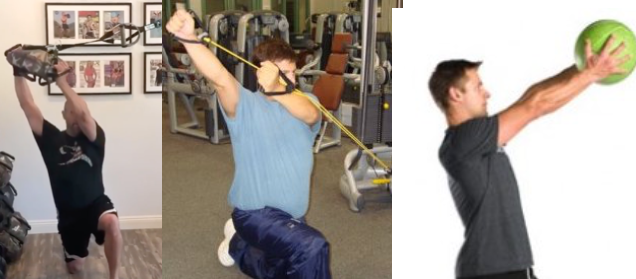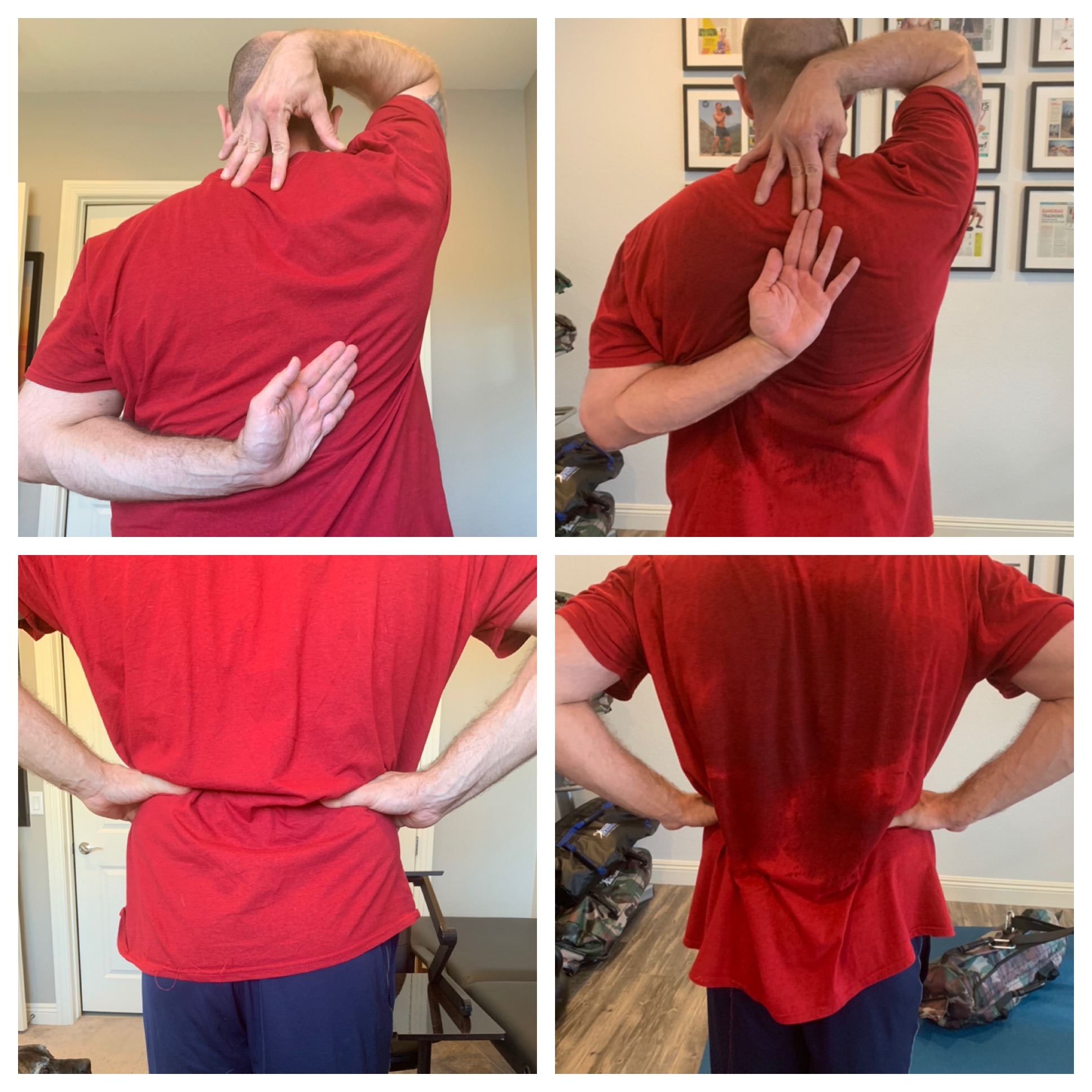Why We Aren’t Stretching So Much!
2020-01-7
I thought after Jessica’s great post (you can read HERE) yesterday about understanding what core stability really means, how we make important connections in our body’s chains, and thinking about those details of a movement, spending today putting some of the concepts more together would be really helpful.
Discussing such topics has to bring us to addressing the fact that in DVRT we don’t stretch a whole lot. Now, I try my best to avoid making the social media comment that is just about getting clicks and fights. Let me explain why we don’t stretch so much and why the DVRT drills we are going to present are often more effective.
My Muscles Are Tight!
Trust me, when it comes to having “tight” muscles I am all too familiar! I’ve told the story numerous times that my spinal issues trace back to early teenage years. Having gone to physical therapy many times I was told I had really tight hamstrings. In fact, when I was playing college basketball the team therapists had me focus on stretching my hamstrings before pretty much every activity because I was so tight.
Like probably so many people, I was frustrated. I stretched, I stretched, and I stretched. However, every day felt like groundhog’s day with my hamstrings. Not knowing what else to do, I just kept stretching with almost no results to show (does this sound somewhat familiar?).
The me now could probably have dramatically helped the me back then, but that is only because our understanding of the body has grown greatly in the past 20 years (can’t believe my college days were more than 20 years ago!). I think the best way to explain the biggest difference in through this great quote from renown physical therapist, Gray Cook.

How does this relate to my tight hamstrings? If you go back to the post, I said that I started seeing my spinal disease really start taking impact when I was about 13. My disease is massive degeneration to the entire spine and all its parts. With that type of falling apart, my body perceives my spine as very unstable. In an effort to keep my body “safe” my nervous sees this instability and made lots of muscles “tight” because it was trying to protect me from my instability. As Gray says, “we default to stiffness”.
How does this relate to you or your clients that have never had as significant issue like my spine? For the vast majority of people there are really two things to consider. First, many people have had SOME type of injury to their body which often alters how stable our body sees itself. If that happened a long time we have a bit of an uphill battle because the body has engrained some pretty specific tendencies (it takes roughly around 3,000 reps to change a motor pattern).
The other is that most of us sit for a lot of the day. Sitting as I have described before, artificially supports our body so many of the muscles that would stabilize us in motion take a break. Our body is smart and it doesn’t make sense to make muscles work when we are being supported by some outside equipment. This becomes a problem though when we get up after sitting for so long and try to start doing some really dynamic movements. We need to get those muscles “active” and connected, otherwise you see the highly flexion dominant tendencies most people have like bending over tremendously during a squat.
https://www.instagram.com/tv/B6P–tCnAPZ/
DVRT Australia master, Cam Ward breaks down how some of our cues on these movements are far more effective than trying to stretch it out.
This means that your muscle actual length hasn’t changed very much. The tightness is not a function of the muscles as much as it is the nervous system.
One More BIG Issue
We can’t really have a discussion about stretching or not, active mobility or anything until we put things in perspective. Am I anti-stretching? Not really, we just have to have better context for it. What I am more concerned about is that the number one complaint of many people (even fitness pros) is a lack of time to train. That means I have to prioritize where we are spending our time. If one or two stretches are useful that’s great, put them in, but stretching shouldn’t take up a large amount of your training time!
Stretching can help some but it is usually a couple of hot spots that a minimal amount of stretching can help. However, what if we can put some of our stretching into our efforts to turn on those muscles and get greater connections, sounds good no?
That is what you see below from DVRT Master, Sean Lettero. What is happening and why are we using these tools instead of stretching by itself? The idea of tension has really caught fire in that when we get our muscles to create tension we connect many of the chains of the body that helps us create that stability that helps our body turn the breaks off!
While it may not seem like a big deal if I am holding a medicine ball or an Ultimate Sandbag in my arms, there are profound differences in how we create that tension. Let’s see a few examples, in order to really understand these big differences allow me to address what I just mentioned.

If you look at the above picture, it looks like the two strength training tools are being used the same way. I get visually they look similar but there are significant differences!
-Load: The easiest one is that the load of an Ultimate Sandbag in the front load position for many of these types of drills are MINIMALLY double the weight of a medicine ball. Why is that important? The physical load creates more tension on our body so we get more out of the mobility we are trying to build.
-Plank: What we are trying to do with the Ultimate Sandbag in the front load is create a moving plank. In order to do so we have to be able to make the weight part of our body and have vertical forearms and the weight being pulled into our body which completely changes the front load position for most people. Being an active position is what surprises many!
The ability to create more tension and develop better connections allows us to see that just holding a weight isn’t the same. Let’s go over another good example in drills like lifts/chops. A great exercise that helps us “turn on” those muscles that we said were not working ideally when we sit a lot or have an injury. Lifts/chops not only get those muscles working right, but in the right connection with the other muscles.

While a good lift/chop is better than no lift/chop there are big differences in these 3 pictures even though they all have good elements of the movement. People often think they can use a medicine ball for drills like our press outs, dead bug, etc. What they don’t realize is the medicine ball creates the OPPOSITE pattern we are trying to achieve with the Ultimate Sandbag. With the USB we are trying to “pull apart” while the medicine ball makes us squeeze together. We are trying to pull apart because that gives us better connection with the core muscles that work synergistically to stabilize while pushing in gets more chest and doesn’t offer the same type of connection.
The cable or band is bit closer but still because of the bands only offering tension in the direction of the band/cable, we don’t get as much because the USB offers load vertically and horizontally while connecting the core through the grip and lats.


DVRT Master, Cory Cripe shows we always want to be intentional how we are using the Ultimate Sandbag when you do you get to achieve results without thinking of which stretch to do because you connected the body better like you see below…

This was after my workout where I didn’t think about what muscle I was to stretch but how to integrate the body better!
The point of these discussions to show WHICH tool to use to optimize an exercise. We don’t use a saw for the job of a hammer so we should be more discerning on which tool we use in an exercise to create more successful outcomes. When we do this WITH good movements and intent, we can create the “magic” that people see DVRT delivers all the time! Check out these ideas in action with some of the great work physical therapist, Dan Swinscoe is performing below
Don’t miss our water bag sale! Save 30% AND get our sand along with water fillers when you use code “water2020”. Plus we give you great workouts you can use tomorrow with our DVRT water bag manual that also comes with this offer HERE! Want to see MORE how we create warm-ups that make a difference? Check out our great Dynamic Warm-up program HERE
© 2025 Ultimate Sandbag Training. Site by Jennifer Web Design.







